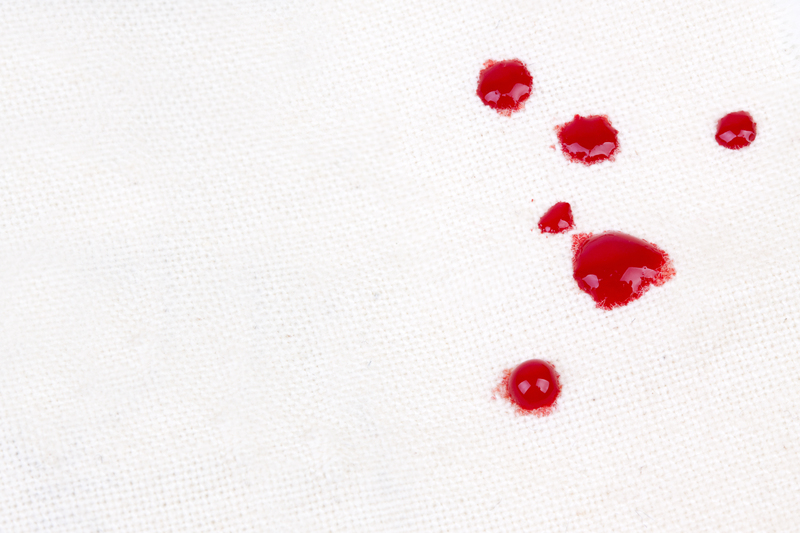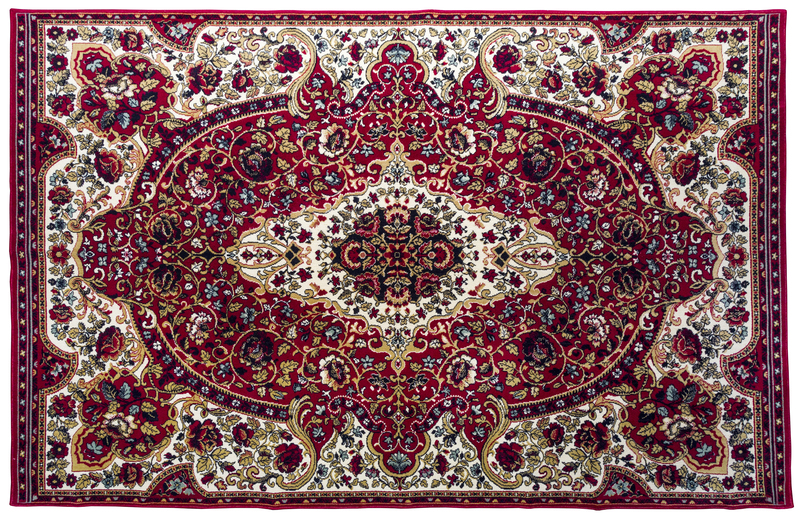Master the Art of Cleaning Stubborn Burnt-on Residue on Your Stovetop
Posted on 22/05/2025

Master the Art of Cleaning Stubborn Burnt-on Residue on Your Stovetop
Cooking up a storm can leave your kitchen smelling wonderful, but it can also leave behind those dreaded burnt-on messes. Whether you're a culinary novice or an experienced chef, dealing with stubborn burnt-on residue on your stovetop is a common but frustrating task. In this comprehensive guide, you'll discover the secrets and best techniques to restore your stovetop's shine and keep it gleaming. Not only will we provide you with tried-and-true home remedies, but you'll also learn about preventative strategies to keep stubborn messes at bay in the future.

Table of Contents
- Why Regular Stovetop Cleaning Matters
- Understanding Different Types of Burnt-on Residue
- Essential Cleaning Supplies for Tackling Burnt-on Stovetop Residue
- Step-by-Step Guide to Remove Stubborn Burnt-on Residue
- Natural and Homemade Cleaners for Burnt Stovetop Stains
- How to Prevent Burnt-on Stovetop Residue
- FAQs about Cleaning Burnt-on Residue from Stovetops
- Restore the Brilliance: The Final Word on Burnt-on Stovetop Residue
Why Regular Stovetop Cleaning Matters
While it may seem like just an aesthetic practice, regularly cleaning heavy burnt-on residue from your stovetop is crucial for several reasons:
- Health & Hygiene: Bits of burnt food harbor bacteria and can cause unpleasant odors, affecting the taste of your meals and overall kitchen hygiene.
- Efficiency: A clean surface ensures even heat transfer, making your cooking more efficient and preventing future spills from burning on instantly.
- Appliance Longevity: Tough, persistent residue can corrode surfaces, damage heating elements, and lead to costly repairs or replacements.
- Fire Safety: Flammable burnt-on residue increases the risk of kitchen fires.
Simply put, mastering the art of removing stubborn burnt residues doesn't just keep your stove looking gorgeous--it protects your family and investment.
Understanding Different Types of Burnt-on Stovetop Residue
Not all stains are created equal. By distinguishing between the various types of burnt-on residue on stovetops, you'll be better equipped to tackle them efficiently.
- Sugar-Based Residue: Syrupy spills from jams, sauces, or caramel can create rock-hard patches as they cool.
- Grease Splatters: Oil and fat, once burnt, form sticky, stubborn black spots especially around burners.
- Protein Stains: Eggs, milk, and other proteins scorch and stick like glue, sometimes blending with pans' surface.
- Composite Messes: Most real-life spills are a messy mix of ingredients that require a combination of techniques for removal.
Identifying your stovetop's mess is key to selecting the right solution for immaculate results.
Essential Supplies for Tackling Stubborn Burnt-on Residue
Before you dive into deep cleaning, gather these must-have cleaning tools and ingredients:
- Baking Soda: A gentle yet effective abrasive for scouring residue.
- White Vinegar: Dissolves minerals, cuts grease, and helps loosen burnt food.
- Dish Soap: Breaks down fats and provides a clean scent.
- Non-Scratch Scrub Pads or Sponges: Essential for scrubbing without damaging the surface.
- Plastic Scraper: Perfect for lifting off stubborn baked-on bits gently.
- Spray Bottle: For easy application of cleaning solutions.
- Microfiber Cloth: Leaves a streak-free finish.
*For tougher jobs, consider a commercial stovetop cleaner approved by your stovetop's manufacturer.*
Step-by-Step Guide to Remove Stubborn Burnt-on Residue
Ready to master the art of deep-cleaning your stove's toughest burnt-on stains? Follow these steps:
1. Prepare and Cool Down
- Ensure the stovetop is completely cool to the touch before starting.
- Remove grates, burner covers, and any detachable knobs or dials.
2. Loosen with Moist Heat
- Lay a damp cloth soaked in very warm water over the burnt residue for 15-30 minutes. This softens the gunk, making it easier to tackle.
3. Sprinkle Baking Soda
- Generously sprinkle baking soda over the affected area. Its gritty texture is perfect for tackling burnt-on grime without scratching glass or enamel.
4. Spray with Vinegar
- Fill a spray bottle with white vinegar and mist over the baking soda. The mild fizzing reaction helps to loosen stubborn layers even more.
- Let it sit for 10-15 minutes for maximum effectiveness.
5. Scrub Gently
- Using a non-scratch scrubbing pad or a dedicated stovetop cleaning sponge, gently work the mixture into the stain.
- For thicker patches, use a plastic scraper held at a shallow angle to gently lift away the softened residue.
6. Clean and Rinse
- Wipe away residual paste with a damp microfiber cloth, making sure to remove all traces of cleaning powder and loosened grime.
- If needed, repeat the process on stubborn spots or stains.
7. Wash Removable Parts
- Soak stove grates and burner covers in hot, soapy water. For burnt-on food, sprinkle with baking soda and let sit before scrubbing clean.
- Rinse thoroughly and dry before reassembling your stovetop.
8. Final Touch
- Buff dry with a clean microfiber cloth for a gleaming, streak-free finish.
- Regular maintenance will prevent tough build-up in the future.
Pro Tips for Glass and Induction Tops:
- Avoid abrasive pads or powdered cleaners that may scratch or dull the surface. Use only soft cloths and specially formulated glass cooktop cleaners.
- Razor blade scrapers (used gently and held almost flat) can safely lift burnt spots on glass without risk of gouging--always check your manufacturer's recommendations first!
Natural and Homemade Stovetop Cleaner Recipes
For those who prefer eco-friendly solutions, these natural remedies for burnt-on stovetop messes are both safe and effective:
- Baking Soda Paste: Mix 3 tablespoons baking soda with 1 tablespoon water. Apply to stubborn residue, let sit 15 minutes, then scrub and wipe clean.
- Vinegar Spray: Mix equal parts water and white vinegar in a spray bottle. Use liberally to dissolve stubborn grease and mineral stains.
- Lemon Power: Rub a cut lemon over burnt areas for extra degreasing power--the acid helps break down burnt food while leaving a fresh scent.
- Salt & Baking Soda Combo: For gritty stains, add a dash of salt to your baking soda paste for increased abrasiveness, perfect for metal racks and burner covers.
Pro tip: For especially tough, thick buildups, try laying paper towels soaked in vinegar over stained areas overnight. This will soften the residue for easier removal in the morning.
How to Prevent Stubborn Burnt-on Stovetop Residue
Once your stove is spotless, it's easier to keep it that way. Prevention is the key to avoiding time-consuming cleaning sessions.
- Wipe up spills immediately: Even small drips should be cleaned quickly, before they have a chance to burn onto the hot surface.
- Use splatter guards: When frying or simmering, cover pans to reduce grease and sauce splatters.
- Line drip pans: If your stove has removable drip pans, line them with foil or use reusable liners for easy cleanup.
- Periodic deep cleaning: Set a monthly reminder for a full surface clean, especially if you cook daily.
- Match pan size to burner: Overhanging pans cause more drips and scorches. Use pans that fit burners to avoid hidden messes.
- Monitor cooking temperatures: Excessive heat increases spill risk and causes instant burning when food contacts the stove.
Frequently Asked Questions: Burnt-on Stovetop Residue
Can I use steel wool to remove burnt-on stains?
No. Steel wool can scratch most stovetop surfaces, especially glass, enamel, and stainless steel. Always stick to non-abrasive pads or manufacturer-recommended scrapers.
What should I avoid when cleaning an electric or induction cooktop?
- Never use abrasive powders, steel wool, or harsh chemicals. - Do not submerge electric stovetops in water. - Always use specialized glass/ceramic cleaners for induction or glass-top stoves.
How often should I deep clean my stovetop?
For best results, deep clean your stovetop once a month or more frequently if you cook daily or notice visible grime.
Are commercial oven and stovetop cleaners safe?
Yes, but only use products specifically labeled safe for your stovetop's material (glass, enamel, stainless steel). Always test in a small area first and follow instructions.
Restore the Brilliance: The Final Word on Cleaning Stubborn Burnt-on Stovetop Residue
Dealing with stubborn burnt-on residue on your stovetop doesn't have to be a nightmare. Mastering the right cleaning techniques and preventative strategies will keep your appliance sparkling, extend its lifespan, and make cooking a joyful experience. Through a combination of gentle abrasives, natural cleaners, and a touch of persistence, even the most significant burnt messes can be conquered.
Remember: Consistency is key. Quick daily wipes, paired with regular deep cleaning, ensure you never have to struggle with layers of burnt food again. With these actionable tips, your stovetop will remain the true star of your kitchen, meal after meal!
Make cleaning burnt-on stovetop residue an art, not a chore. Start today--and relish a kitchen that always shines!



.png)